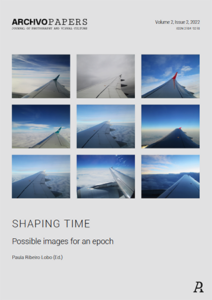
A selection of panels from my Picture Library project were published in the recent issue of Archivo Papers – Journal for Photography and Visual Culture edited by Paula Ribeiro Lobo (Volume 2, Issue 2, 2022). You can view it as a pdf here.

Art, photoworks, books, editions, and everything else

A selection of panels from my Picture Library project were published in the recent issue of Archivo Papers – Journal for Photography and Visual Culture edited by Paula Ribeiro Lobo (Volume 2, Issue 2, 2022). You can view it as a pdf here.
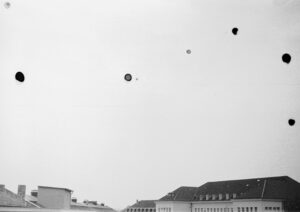
My work April 1986 is discussed in an interview with Nicola Patruno in the recent issue of inCf magazine (no. 1, 2022, p. 20–23).
The ongoing exhibition at P420 was prolongated for another month until April 10th.
More reviews were published recently, “Riflettere sulle immagini. Le fotografie di Joachim Schmid a Bologna” by Giulia De Sanctis in Artribune, “Schmid rende arte la fotografia: la sua mostra a Bologna” by Paola Naldi in la Repubblica, and “Nessuna nuova fotografia, finché tutte quelle esistenti non siano state utilizzate” by Bruna Giordano on exibart.
Ornella D’Agnano discusses my exhibition at P420 in her review “I Photoworks di Joachim Schmid alla P420” on Juliet art magazine (in Italian only).
Another interview by Mauro Zanchi, conducted on the occasion of the exhibition at P420 was recently published on Antinomie both in English and in Italian translation.
Mauro Zanchi discusses my exhibition at P420 in his review “Joachim Schmid. Photoworks” on ATP Diary (Italian and English).
Azzurra Immediato discusses my exhibition at P420 in her review “P420 ospita Photoworks e il significato della fotografia secondo Joachim Schmid” on segnonline (in Italian only).
Julie-Ann Latulippe discusses my work Bilder von der Straße in her article “Par-delà les images : quand la matérialité photographique éclipse la représentation / Beyond the Image: When the Materiality of the Photograph Eclipses Representation”, published recently in esse magazine #101: Nouveaux matérialismes / New Materialisms.
The Found Memories of Jachim Schmid is the first episode of Artworks, a series of podcasts about artists and their work produced by Joe Gibson and Mishka Henner. It is now live wherever you get your podcasts.
Another interview by Mauro Zanchi and Sara Benaglia was published on Doppiozero (in Italian).
Mireille Ribière discusses my E-Book in a paper presented at a conference in Mexico City in May last year. Her text “Georges Perec et les arts plastiques. Détournement et fidélité : E-book de Joachim Schmid” is now available for download on Academia.edu.
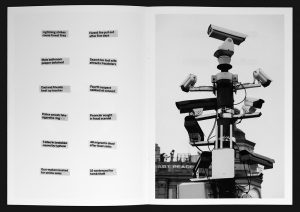
My work Art Peace China Daily was published in a recent issue of Photo Paper (No. 50, 2020), rearranged and adapted to the magazine’s format and its sixteen pages.
John McDowall discusses my book Vom Gehen in his article “Some intervals in artists’ books”, published recently in The Blue Notebook (Volume 14, No.2, Spring/Summer 2020, p.24–31).
Mark Durden discusses my book L.A. Women in his essay “Testing humanism: the transactions of contemporary documentary photography”, published recently in The Routledge Companion to Photography Theory.
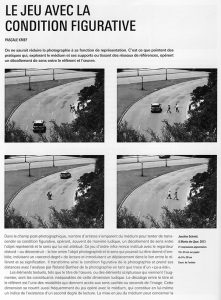
Pascale Krief discusses X Marks the Spot in her article “Le jeu avec la condition figurative”, published recently in artpress hors série (No. 52, November 2019, p.54–57).
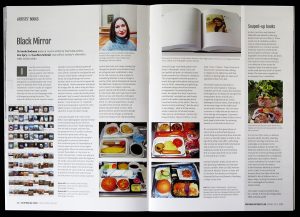
Sarah Bodman discusses some of my books in her article “Black Mirror”, published recently in Printmaking Today (Vol. 28, Summer 2019, Issue 110, p.22/23).
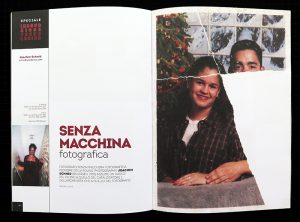
Erika Lacava’s article “Senza macchina fotografica” as well as an interview she made with me were recently published in Hestetika magazine no. 31, October 2018 (in Italian).
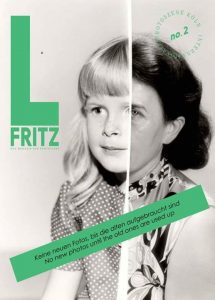
Some of my works were published along a four-page article about my work by Inka Bornstein in L. Fritz magazine no.2 (German and English).
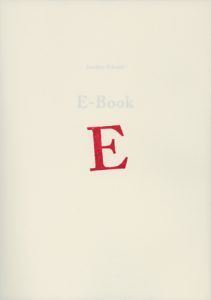
Dennis Duncan discusses my E-Book and Elisabeth’s Tonnard’s related book Joachim Schmid Works on The Times Literary Supplement blog today.
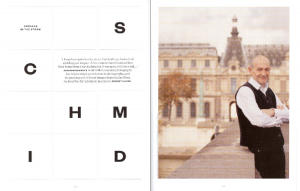
Robert Shore’s eight page article “Orphans in the Storm” about my work was published in Elephant magazine no.21, winter 2015.
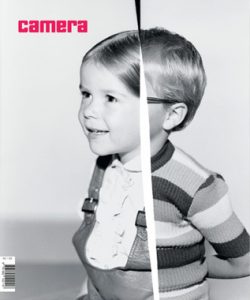
Valentine Plisnier’s article “Joachim Schmid, Photography Explorer” was published in camera no.8, November 2014, accompanied by a 20 page portfolio with a selection of my works.
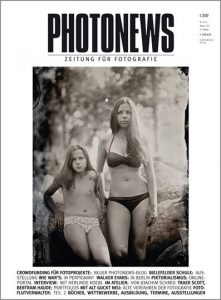
“Die Bilder der Anderen. Im Atelier von Joachim Schmid” by Torsten Scheid was published in Photonews No. 10, Oct 2014.
An eighteen-page article by Susana Martins, “Photography as Anti-Museum? Conflicting museological concepts in the work of Joachim Schmid” was published in Photographies magazine volume 7, issue 2, 2014.
An interview by Sharon Boothroyd is online now on her site Photoparley.
An interview by Sören Schuhmacher is online now on American Suburb X / ASX.
Found Photography, an interview conducted in Sepember this year in Savignano sul Rubicone by Fabio Severo, is online now on Klat magazine (in Italian and in English).
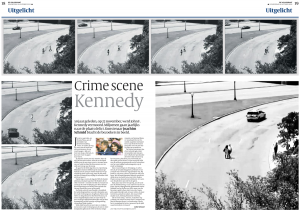
My series X Marks the Spot is featured on a double-spread in today’s edition of Dutch newspaper de Volkskrant.
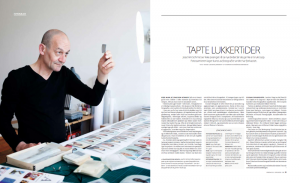
A seven-page article by Hugo Lauritz Jenssen about my work was published in Norwegian D2 magazine on June 21st, 2013.
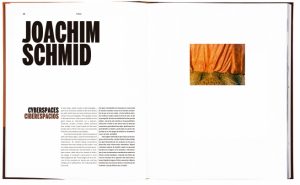
An 18-page portfolio with my series Cyberspaces is included in the recent issue of C Photo magazine (Cycle 2, No. 6: Observed – Observados, edited by Jörg Colberg).
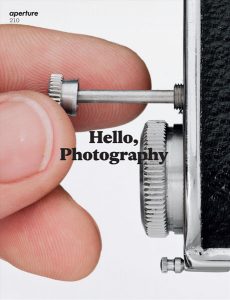
My project Other People’s Photographs is discussed in a four page article by Geoffrey Batchen, Observing by Watching: Joachim Schmid and the Art of Exchange published in the Spring issue of Aperture magazine (# 210).
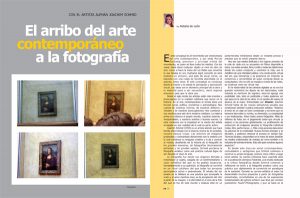
A six page article featuring my work, El arribo del arte contemporáneo a la fotografía by Natalie de León was published in the July/August issue of Dossier magazine, Montevideo.
Manuela De Leonardis interviewed me during my stay in Rome. You find her text on Exibart.com (in Italian)
Mark Durden’s essay “Lost in Fascination” as well as an extensive interview he made with me were recently published in ArchivoZine (in English and Portuguese).
ABC Artists’ Books Cooperative is a network of bookmakers founded in 2009. We are a group of artists making print-on-demand books, we know of and are curious about each others’ work but many of us never met personally. In order to learn more about our individual practices we decided to make a series of interviews with each other. Ljubljana-based artist Tanja Lažetić corresponded with Berlin-based Joachim Schmid over the course of several weeks in December 2011.
Attitudes and Approaches. Tanja Lažetić in conversation with Joachim Schmid
TL: The idea of ABC interviews was attractive to me because I was doing interviews on several occasions before. I like how I can re-define my own position through the dialogue with others. It is similar to creating a collage or making images from found images.
You are an artist who has worked with found photography since the early 1980s. You began your career as a freelance critic and publisher of the self-published magazine Fotokritik from 1982 to 1987. After you stopped publishing Fotokritik in 1987, you focused on your own art production, based primarily on found photographs and public image sources. I find it very interesting that your work as an artist is very similar to the work of a critic. Selecting other people’s photographs to make one’s own story is exactly what critics do. Could you tell me more about your work as a critic and the things that led to your decision to become an artist?
JS: I’m afraid I have to start with a disagreement. I do not make stories by selecting photographs. Most of my works don’t have a narrative character. By selecting and sequencing photographs I make proposals for how to look at them, I create contexts that emphasize particular features of photographs, etc. You are right, however, that this is a critical practice, and it evolved right out of critical writing.
When I started working with and about photography I soon had lots of doubts and questions about most forms of established photographic practice. I had read most of the few books on the subject that were around at that time, but these did nothing to dispel my doubts nor answer my questions. So I started writing, in the beginning because I thought I could show people what’s wrong (that’s what young men do). Slowly I discovered more interesting aspects of writing, it’s the ideal thing to do when you want to find out what something is and what something does. If you don’t know, write about it.
My attention shifted from those forms of photography that were more or less acknowledged in the 1980s – art photography and reportage – to forms that for most photo people were nothing but rubbish – snapshots, postcards, mugshots, etc. I found the images more fascinating than many of the ones I saw in the fine art context, and they asked the more interesting questions. By writing about these pictures and their questions I discovered the limits of writing. Many of these pictures do something that escapes writing. I guess it’s similar with music. You can write as much as you want, the fascination is in the music or in the pictures, not in the writing. So I worked more and more with pictures, using them in combination with other pictures, in combination with writing, creating new contexts, and eventually it was nothing but pictures. I still write occasionally and I may come back to more frequent writing, but for the time being I am focused on visuals.
TL: I like stories. I look at the world through stories. For a while my artist’s statement was: “We make ourselves with stories.” But I think I know what you are talking about. I found an interesting sentence in a dictionary: “Ellie never told stories – she had always believed in the truth.” But when we want to say that something really happened we say it’s a true story. When you create contexts from photographs that we wouldn’t normally look at so closely, say, snapshots of the Currywurst, these snapshots become part of something else when looked at in the context of other photos of Currywurst. What else could we call this than a story? A true story maybe? Scenes taken from life are everyday stories. What I would like to know is, don’t you find that things become a story very quickly by themselves?
JS: It’s true, storytelling does play an important role in human society. Photographs can play a role in storytelling but they are not stories per se. Let’s take those snapshots of sausages as an example. As a book, it’s a group of photographs that are united by a coherent pattern. It’s one chapter in a taxonomy of popular photography. The group does not tell the history of Currywurst. The group also doesn’t tell a story. Individual photos in this group don’t tell stories either. They may remind individual viewers of personal experiences or of stories they heard, but that happens outside the photograph, in the viewer’s brain. That’s what photographs are so good at: they trigger both imagination and memory. Context and additional bits of information can direct and limit imagination.
Wim Wenders’ Wings of Desire tells a story. Looking at a photograph of a Currywurst may jog your memory and remind you of this story. It may also remind you of the location where the movie was shot, of the location’s particular history, of your friends living near the Currywurst joint depicted in the movie, or of other movies. You’re looking at a photograph, not at a story. Photographs are photographs and stories are stories. Sometimes photographs are anecdotal, sometimes sequences of photographs work like stories, but this does not happen inevitably, it’s just one option, one of many possible practices in photography.
TL: You mentioned Wenders’ movie and I’m going to see these Currywursts differently: I remember Wenders’ black and white film and these Currywursts talk about love. This should not be a problem, because sausages can easily talk about love. Or about death. In another Wenders’ film The State of Things, the actor playing a film producer from Los Angeles explains that there are only two good stories in the world: love stories and stories of death. These are exactly the stories in my favorite book of yours, L.A. Women (isn’t it interesting: L.A. again?). None of these women in this book are alive, is that right?
And something else: if you only had one photo of the same story, it would not be very interesting. Only with so many photos can we understand that it is not a failed image. Isn’t it interesting that with the snapshot we need the quantity to make out – and now I will not say the story but – the message?
JS: In that movie, the very same actor sings “Hollywood, Hollywood, never been a place people had it so good like Hollywood, like Hollywood” all night long – before he gets shot. A very nice ironic, if not sarcastic little comment about a place that has been trying to monopolize storytelling.
I never thought of Hollywood while I was busy with the L.A. Women book but there we go. Just a few miles south of Hollywood an unprecedented crime series brought out a collection of very weird photographs. I found these photos of unidentified women on the website of L.A. Police Department and what interested me most was the fact that we don’t know anything about them expect the place where the photos were found: in the house of a serial killer. Again, my book is not a story but it assembles the raw material of many stories. The book doesn’t tell you much but it asks questions. About half a year after I published the book, L.A. Police Department released the results of their investigation. Most of these women were identified and most of them have been missing for a long time and were probably killed. If there were an Oscar for crime, the alleged culprit would probably be rewarded with a special lifetime achievement award for Best Serial Killer Of All Time.
Quantity is interesting, in crime as much as in photography as in many other fields. If you have one photo it doesn’t tell you much. If you have a hundred, you start to see a pattern. If you have a thousand, you see nothing but pattern. That’s not only true for snapshots and similar kinds of unambitious photographs, it’s also true for art photography. If you visit a series of art fairs you will see the same picture again and again: this year’s model, presented by various photographers who all claim to be the authors of their original creations.
TL: The cover of the book L.A. Women is black, but is the content the reason why this book is part of your Miscellaneous Books series? How do you categorize the books in sets of black, grey, white or miscellaneous books? When did you do this classification, and why?
JS: I was struggling with the cover of this book for a while. Selecting one of the portraits didn’t make sense, a cluster of many small portraits didn’t look good, and I wasn’t happy with a number of other versions I had tried. Eventually I ended up with a simple typographic solution, also considering various colour options; at the end there was no colour. I was sure about the typeface and white type on black looked better than black type on white. So it became a black book.
When I started making print-on-demand books it was clear that I would make a substantial number of books. Many unpublished projects had accumulated, and the availability of the new technique stimulated the fantasy for more projects. I had to decide whether all these books ought to be designed in a uniform way or whether they ought to be diverse. Some projects consist of several volumes – this requires uniformity; too much uniformity is boring. Eventually I decided for three lines of books, the white books are catalogues of works that exist outside the books, the grey books are artist’s books, i.e. works that only exist in book form, and the black books are fun little projects. After a while I happened to make a book in collaboration with a friend; this book wouldn’t fit any of the three categories so it got a blue cover. Another book that was conceptually related to the blue book also got a blue cover. Then there was a book that was conceptually diverse from the blue books so it got a red cover. Two more books that were conceptually similar to the red book got red covers, too. And then there are also other books. This may seem confusing but maybe it simply means that we shouldn’t take formal structures too seriously. A corset is fine as long as it keeps things in shape but you should open it if breathing becomes difficult. One of my next books may have a yellow cover or whatever; no pink, however, and no purple and no green; there are strict limits when it comes to colour. Black, white and grey are the best.
TL: I often wonder myself why I want to open some books and not others. I like your comparison with the corset because it is true, breathing difficulties drive us. I wonder how it was in your exhibition Other People’s Photographs where you exhibited 96 books. I saw a photo of the installation where on the white wall is a white shelf and on it 96 grey books with black titles. Which book to open? Each of these books has its own title, for example, Bird’s Eyes, November 5th, 2008, Plush or Tropic of Capricorn. Why 96 books? How did you choose the titles of these books? How do you select photos for these books? Maybe this is not the right question because I had no problems to select 4 out of 96 titles. But the main question seems to me, how do you know that in that pattern you have not lost ”the question”?
JS: I worked on this project for three years, and when I started there was no perfect plan for the entire work. There was an idea and that idea was a contemporary remake of my Archiv series in a context of prolific image production and unlimited supply. I started gathering photographs, then ordering them in categories. The categories evolved as I gathered pictures and there was no preconceived set of categories. After a while I had about 250 categories and then I started editing. I wanted diverse categories, some of them rather obvious, some of them surprising, some rather general and all-emcompassing, some very specific, thus creating a taxonomy and subverting the system of categorization at the same time. Think Borges. I knew I needed a substantial number of categories for the project to make sense; at the same time it is theoretically endless and I had to limit it because I didn’t want to spend the rest of my life with it. Something around 100 books seemed to be an appropriate number. When I came to the end of the work I realized that the entire set of books would only be affordable for very few collectors. So I decided to make a budget version. I managed to fit 96 chapters into a two-volume edition, hence 96 books.
For each of the categories I had many more pictures than the 32 that are eventually included in the book. Selecting and editing follows a visual logic. I needed a conceptually and visually coherent group of photographs for each book, with enough samples to compose double spreads that look good. If I had doubts about a group or if the available pictures didn’t make convincing spreads, the category was abandoned. The titles of many of the individual books are simple and descriptive, some seem to be rather enigmatic but they turn out to be descriptive as soon as you look at the pictures. Others have more or less obvious references to art and photo history. In exhibitions the books are displayed in alphabetical order, as stupid as A to Z. Many people actually look at all of the books, one after the other. They spend much more time with books than with prints at the wall.
TL: Other People’s Photographs are 96 books which have been exhibited at Fotohof in Salzburg. But you also do the complete collection of 96 books as a boxed set. Why did you do a different form of the same project? Would you like also to exhibit the photographs from the books on the wall?
JS: These are two different things. Books in an exhibition work differently than books on a shelf. In exhibitions it is important that people can look at the books and leaf through the pages, i.e. they must also be allowed to touch them. Presenting them in glass cases is pointless. Things are different for collectors who have books in their houses. They usually don’t have the space that a temporary exhibition requires and they may want to have their books stored in a compact form. The box is an elegant solution that creates a physical frame for the books and makes them accessible in a library. Of course people are free to simply put books on their shelves but if someone wants the more elaborate version I’ll be happy to provide it for some extra money.
TL: The possibility to open the book has its own charm, which you previously nicely compared before to stripping a corset. But displaying photographs on the wall has its own charm too. Would you like to exhibit Other People’s Photographs also on the wall? Do you have any photographic series that is not in the book, but just for the wall?
JS: Other People’s Photographs was conceived as a series of books. I do not intend to create a version for the wall. The work’s character is encyclopedic, the library is the frame of reference so the book is the obvious form. Many of my works exist in two versions, as the unique or limited edition work and in the multiple book form. Some works exist only as originals, the Statics series for example.
TL: How important is the Artists’ Books Cooperative for you artistic work? I knew that ABC was your idea, but tell me more about the beginnings of this international network? Does the group meet your expectations?
JS: When I started making print-on-demand books I knew there would be a problem with distribution. Assuming that I am not the only artist who uses this technique and faces the same problems, I started looking for like-minded colleagues. When there were five of us we founded ABC. It’s true that I am the driving force of the cooperative but without the other members it wouldn’t exist. When I started this endeavour I had no idea what it would be and how it would develop. I didn’t expect anything. I hoped it would work and it does. I don’t have any idea what it is going to be in five years from now. It depends on all of us. I’m happy the idea of solidarity and cooperation works, and I’ll be happy if it works without me being the driving force. I don’t expect anything but I hope for a lot. We need to establish new ways to get our books to the people who are interested in them. The book world is in turmoil. The old system doesn’t work any more and the new system does not yet work.
TL: The most attractive thing concerning the artist’s book seems to me that you can get a piece of art for relatively little money. Framed photographs have a different price than a photobook. In addition, in the photobook you can get an entire series of photographs, and in a more abstract way, a whole exhibition in a single book.
At the beginning of the modern artist’s book, the idea in the book was more important than the materialization of that idea. It was the time of conceptual art. Many books of that period were made as open editions. Today the prices of these books are hundreds or more times higher. In his early years Ed Ruscha numbered only the first edition of his first book Twentysix Gasoline Stations. After this he did not want to do that. With numerations the book becomes the object. Times changed and even books by artists working today want to be exclusive and special. Today even books that are not self-published are numbered. More and more artist’s books are designed by professional designers who try to create valuable objects with special papers and books in different formats. These books get more expensive and the system becomes more exclusive.
Earlier in our conversation we mentioned monopolization of storytelling and Hollywood. But it seems to me that a very similar story is going on with photobooks. What do you think about this?
JS: You are right, there’s an interesting tendency. The book becomes more and more a fetish. I’m afraid this happens inevitably with every book over time (and any other object), but nowadays it is meant to be like this whereas some decades ago many artists preferred the democratic approach: industrially produced books at affordable prices. I am still subscribed to this idea and I’m suspicious of the fetishist approach. But then there’s nothing you can do if a book that came out in a small edition twenty years ago is sold now for much more than its original price. That’s the way the market works, at least for objects collectors desire. I’m sure it will be the same with print-on-demand books because by definition not many copies are printed, then after a few years the paper will be replaced by a different paper, the binding may be different etc. and collectors will start looking for the rare first generation object. It’s mad, but this madness is not limited to the art world. Look at people who collect stamps or vintage cars or wine or whatever.
TL: It is very interesting to me that often artists themselves are also buyers of artist’s books. I also buy, but I’m not a collector. I buy only if I really like the book and if it is affordable. It seems to me that these books are helping me to create a statement. What about you, are you buying books by other artists?
JS: Isn’t it funny that most artists who make books are also avid collectors? I’m not a member of this gang. I hardly buy any books, and if so I’m following a spontaneous mood, not a collector’s idea. There’s no system. When I’m in the mood I buy something – if I like it, if it’s not too expensive and if it’s small. So if there’s something like a “curatorial idea” of my “book collection” it’s the small size – nothing larger than A5. Small books have lots of advantages; they are modest, most of them are more about ideas than about materials and techniques, usually they are cheap, there’s not much weight to carry, you can buy several copies, you put them in an envelope and send them to a friend, you don’t have to worry about bending or losing them.
Often people who are more or less familiar with my work assume I must be a collector and when they come to our house they are surprised how few things there are. I did accumulate a lot of pictures and some other stuff for my work, but as soon as a project is completed all the leftovers are thrown out immediately. I don’t like to be surrounded by things, I want to be surrounded by available space. I’m also not very interested in possession – including books. I used to get lots of review copies; many of them I gave to the university library, and the others I gave to a second-hand book dealer once a year. It’s a relief if boxes of stuff leave the house. The only books I keep are the ones by friends. But if you have the wrong friends that can easily fill a shelf.
TL: How do you see yourself: as a photographer or as an artist?
JS: Technically that’s a simple issue: Photographers are the people who make photographs. As I do not make photographs, I am not a photographer. But defining artists through their preferred technique isn’t too interesting. Let’s talk about attitudes and approaches instead.
TL: Do you have any good images of corsets? Any which make you breathless? Maybe you have more than one?
JS: I’m not particularly interested in pictures of corsets but thanks to the search engine the world of images is at my feet if I need one: “About 2,570,000 results (0.32 seconds)”. Madonna was rather breathtaking in her Gaultier outfit.
*
ABC Artists’ Books Cooperative is the brainchild of Joachim Schmid. The network of self-publishing artists was founded in December 2009. JS left the cooperative in February 2013 to concentrate on his own work again.
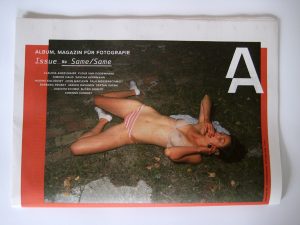
Album, Magazin für Fotografie #2: Same/Same
Interview with Joachim Schmid: Hunter and Gatherer (international edition)
Fotografische Kollateralfunde (deutsche Ausgabe)
An eight-page article “Books, Photographs, and Personal Histories. Susan Meiselas and Joachim Schmid in conversation with Geoffrey Batchen” was published in the January/February 2009 issue of Art on Paper (Vol.13, No.3).
Jim Casper’s article Celebrating photographic garbage, accompanied by an audio interview with Joachim Schmid recorded in Arles earlier this year, is now online on lensculture.com.
A two-page article The Accidental Predator. Joachim Schmid makes art from other people’s photographs by Sarah Andress was published in the November/December 2007 issue of Art on Paper (Vol.12, No.2).
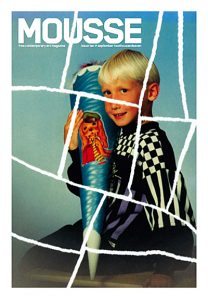
Simone Menegoi’s four-page article I am not a photographer was published in Mousse contemporary art magazine (issue 10, Milano, September 2007). PDF available on the magazine’s website.
Inside Art: Joachim Schmid now on Dazed Digital
“At last, a retrospective for the German photographer whose career started as a freelance critic. In 1982, he found his first photograph that would begin a twenty-five year ongoing series called Bilder von der Straße (Pictures from the Street). Unfortunately it is not to be seen in its entirety (there are still 900 images), but there is a nice addition to the series, as the last image was found on the street outside The Photographers’ Gallery just days before the show opened. Collected in many cities from Berlin, Padua, Luxor to Edinburgh, these discarded ‘pictorial histories’ become an intriguing glimpse into the lives of strangers.
To accommodate his vast demand for images, in 1990 he set up The Institute for the Reprocessing of Used Photographs. People were asked to send in their unwanted photographs that have become an endless source for his work; there are unknown Brazilian faces in Belo Horizonte, Praça Rio Branco and morphed portraits from a Bavarian Studio Photographer in Photogenetic Drafts. But don’t confuse Schmid for an anthropologist or scientist as he vehemently wants nothing to do with such labels, he is merely someone who likes doing things! Be sure not to miss the sound photographs Tausend Himmel (Thousand Skies or Thousand Heavens), an extremely personal exploration also a move into the inevitable field of the digital era.”
Interview by Freire Barnes, filming and editing by Roland de Villiers, produced by Rod Stanley